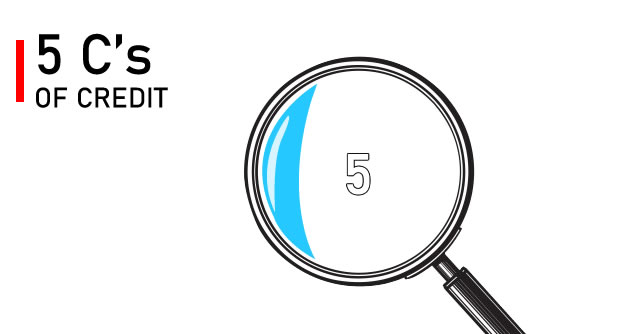Your credit score plays a vital role in your financial life. Whether you're applying for a loan, a credit card, or even a rental agreement, your credit score determines the terms you receive. But do you truly understand what your credit score means? In this guide, we’ll take you through everything you need to know about analyzing your credit score and credit report so you can better assess your creditworthiness in US or where you may find yourself.
#1: What is a Credit Score and Why Does it Matter?
A credit score is a three-digit number that represents your creditworthiness. It’s one of the most important factors lenders use to determine whether you qualify for a loan, what interest rates you’ll be offered, and more.
- The Different Credit Scoring Models: FICO vs. VantageScore
- FICO Score: This is the most commonly used scoring model. Ranges from 300 to 850, with a higher score indicating less risk to lenders.
- VantageScore: Created by the three major credit bureaus, this model also ranges from 300 to 850 but is slightly more lenient with scoring criteria.
- How Lenders Use Credit Scores: Your credit score gives lenders insight into how risky it might be to lend to you. A high score suggests you're likely to pay your bills on time, while a low score could indicate financial instability.
#2: Decoding Your Credit Report: A Detailed Breakdown
Your credit score isn’t just a number—it’s tied to the information in your credit report. Understanding your report is crucial for maintaining good credit health.
- Personal Information: This section includes your name, address, Social Security number, and employment history.
- Credit History: This is the most important section, showing whether you’ve made payments on time, the total amount you owe, and how much of your credit limit you’ve used.
- Public Records and Collections: Includes bankruptcies, tax liens, and any accounts that have gone to collections.
- Inquiries: These are either soft or hard inquiries, which indicate when someone checks your credit report. Hard inquiries can affect your score, while soft inquiries do not.
#3: The 5 Key Factors That Influence Your Credit Score
Your credit score is influenced by a range of factors, but the following five are the most important:
- Payment History: The most significant factor. Your score drops if you miss payments, but making payments on time boosts your score.
- Amounts Owed (Credit Utilization): This refers to how much of your available credit you’re using. Keeping it under 30% is ideal.
- Length of Credit History: The longer your credit history, the more favorably lenders will view you.
- New Credit: Opening several new accounts in a short period can hurt your score.
- Credit Mix: A diverse mix of credit (e.g., credit cards, auto loans, mortgages) can help improve your score.
#4: How to Obtain and Review Your Credit Report for Accuracy
Before you can make improvements to your credit score, you need to make sure your credit report is accurate.
- Free Credit Reports: You are entitled to a free credit report once a year from each of the three credit bureaus through AnnualCreditReport.com.
- Correcting Errors: If you spot errors or inaccuracies, you can dispute them with the credit bureau directly to ensure your report reflects your true financial behavior.
Conclusion: Take Control of Your Credit Score
Understanding your credit score and credit report is the first step toward better financial management. Now that you know how to read and analyze your credit report, it’s time to take action. Start by reviewing your credit report for errors, then focus on improving the factors that matter most. Stay tuned for our next post, where we’ll dive into actionable strategies to help you boost your credit score.
Page Links
- Making the Numbers Work for You: Essential Financial Insights Every Business Leader Must Know
- How to Value Your Business in Uncertain Market Conditions (Without Losing Sleep)
- Deciding Between Debt and Equity Financing (Without Getting a Headache)
- How to Craft an Investment Strategy That Balances Risk and Growth
- How to Weave ESG into Your Financial DNA Without Sacrificing Performance
- Lessons From The World's Most Trusted Companies About Financial Transparency
- Innovation Strategies for Established Businesses
- Why Recovery Matters: Understanding the Role of Rest Days for Fitness Progress
- Fitness Strategies: How to Build Lean Muscle Effectively
- Maximize Your Workout Results: Top Foods to Eat Before and After Exercise
- Real Estate Crowdfunding: A Low-Cost Way to Invest in Real Estate
- Real Estate Investing Strategies: How to Flip Houses & Build Passive Rental Income
- Mobile Payments: The Future of Fast and Secure Transactions
- AI in Finance: How Artificial Intelligence is Revolutionizing Financial Services
- The Future of Insurance: How InsurTech is Disrupting Traditional Models
- Understanding Your Financial Behavior: The Psychology of Money & How to Manage It
- Breaking Free from Debt: Proven Strategies to Achieve Financial Freedom
- The Hidden Dangers of IoT: How to Safeguard Your Connected Devices
- IoT and Agriculture: Feeding the World with Technology
- AI Investing: Best AI Stocks to Improve your portfolio
- AI Creativity : Can Machines Truly Innovate
- IoT For Business Efficiency: Key Benefits and Applications
- Cybersecurity Threats: How to Defend Against Digital Attacks
- How Carbon Credits Work: A Simple Guide for a Greener Tomorrow
- Key Risk Management Models: Understanding the Processes and Similarities
- AML Compliance -Banks : Rules and Future Practices Worldwide
- KYC: Using Blockchain for Identity Verification
- HomeBuyer's Guide to Understanding Mortgages and Rental Options in the US
- PWAs vs. Native Apps: Better Performance, Cost, and User Experience?
